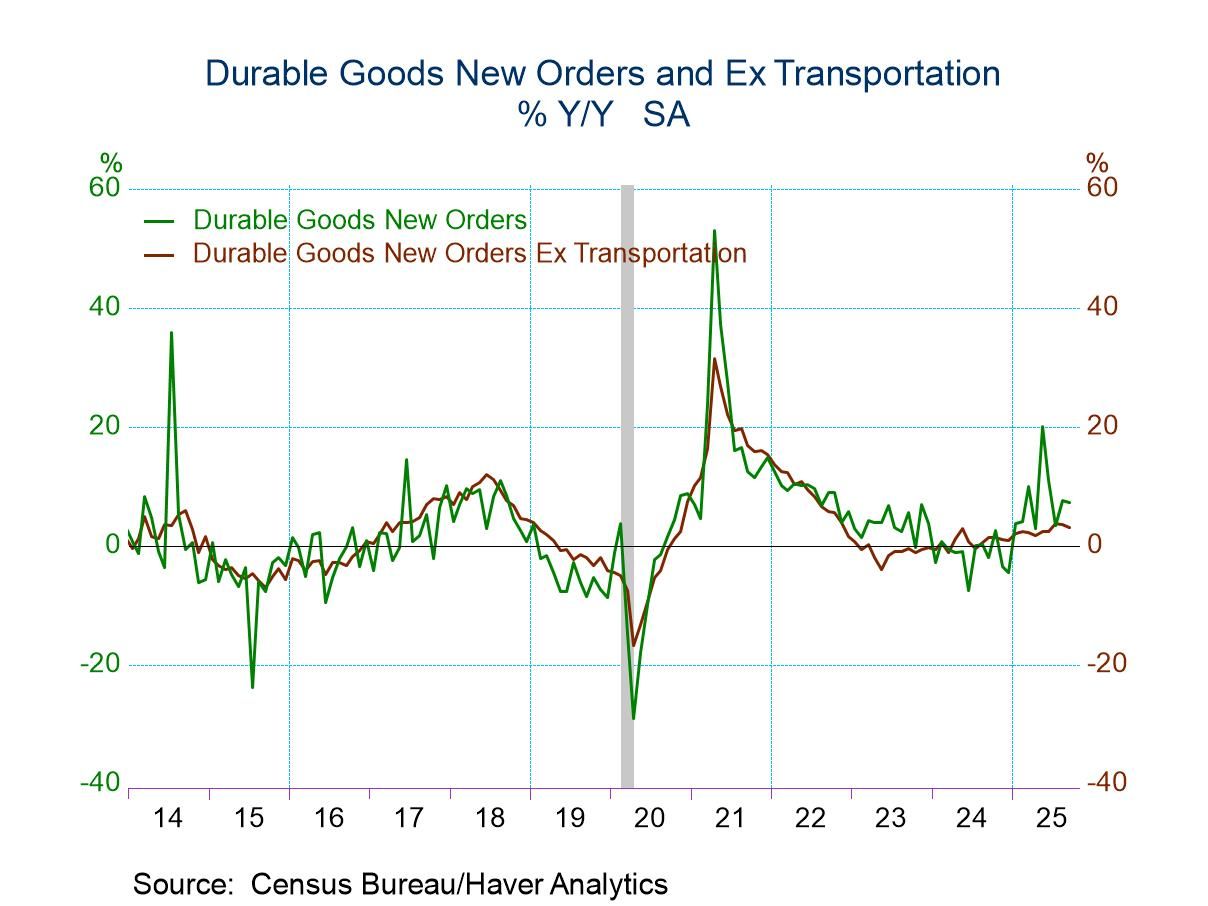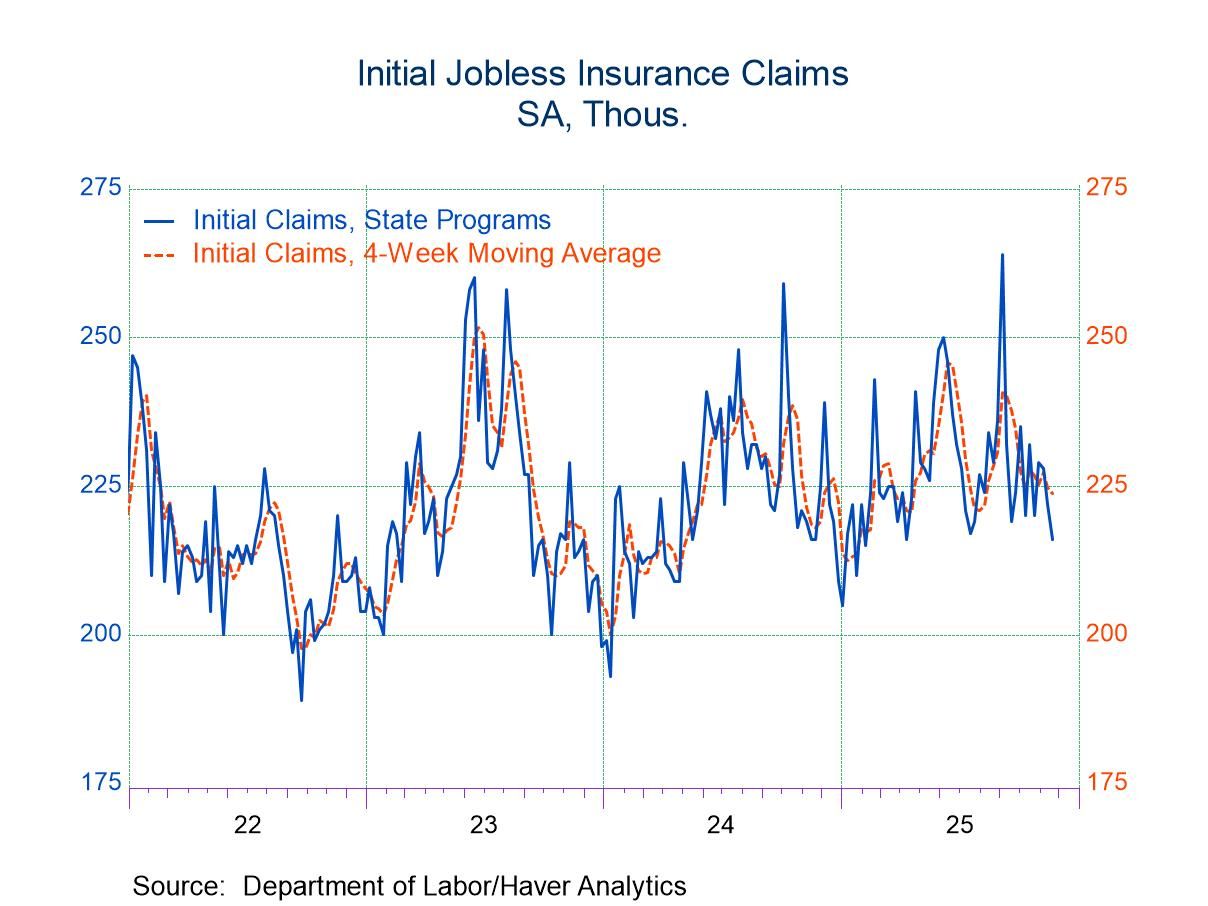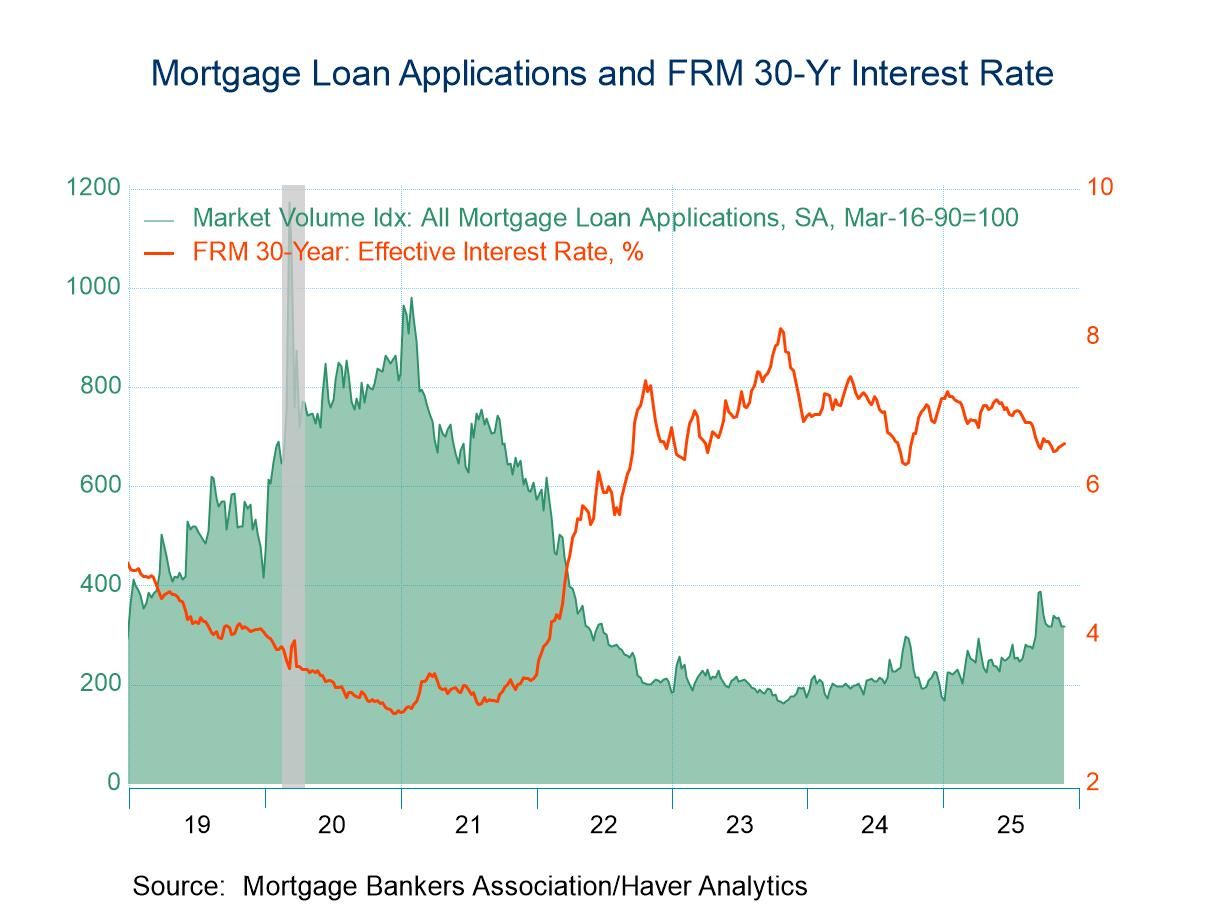Initial unemployment insurance claims spiked to 388,000 during the week ended October 13 versus a revised 342,000 during the prior week, last week reported as 339. Consensus expectations were for 365,000. The four-week moving average of initial claims increased to 388,000. The latest figure covers the survey period for the BLS survey of October payroll employment survey. Claims rose 3,000 (0.8%) from the September period. During the last ten years the has been an 75% correlation between the level of claims and the m/m change in nonfarm payrolls.
Continuing claims for unemployment insurance slipped to 3.252M (-12.2% y/y) during the week of October 6. The insured rate of unemployment fell to 2.5% after 6 months at 2.6%. This particular count covers only "regular" programs and does not include all extended benefit and other specialized jobless insurance programs. In the week of September 29, the latest figure available, the grand total of all benefit recipients again fell to a recovery low of 5.002M. The latest was down by one-quarter y/y and was off by more than one-half since the peak in January 2010.
By state, the insured unemployment rate continued to vary greatly with Virginia (1.21%), Indiana (1.47%), Texas (1.52%), Ohio (1.54%), Tennessee (1.68%), Louisiana (1.74%), Florida (1.85%) and Michigan (2.05%) at the low end of the range. At the high end were Massachusetts (2.46%), Illinois (2.49%), New York (2.59%), Nevada (2.68%), Connecticut (2.91%), New Jersey (3.11%, California (3.16%) and Pennsylvania (3.04%).
Data on weekly unemployment insurance programs are contained in Haver's WEEKLY database, including the seasonal factor series, and they are summarized monthly in USECON. Data for individual states, including the unemployment rates that determine individual state eligibility for the extended benefits programs and specific "tiers" of the emergency program, are in REGIONW, a database of weekly data for states and various regional divisions. Action Economics consensus survey estimates are in AS1REPNA.
Where Would The Federal Funds Rate Be, If It Could Be Negative? from the Federal Reserve Bank of Cleveland can be found here http://www.clevelandfed.org/research/Commentary/2012/2012-15.pdf
| Unemployment Insurance (000s) | 10/13 | 10/06/12 | 09/29/12 | Y/Y% | 2011 | 2010 | 2009 |
|---|---|---|---|---|---|---|---|
| Initial Claims | 388 | 342 | 369 | -3.5 | 409 | 459 | 574 |
| Continuing Claims | -- | 3,252 | 3,281 | -12.2 | 3,745 | 4,544 | 5,807 |
| Insured Unemployment Rate (%) | -- | 2.5 | 2.6 | 2.9 (10/11) |
3.0 | 3.6 | 4.4 |
| Total "All Programs" (NSA) | -- | -- | 5.002M | -25.4 | 7.750M | 9.850M | 9.163M |


 Global
Global



